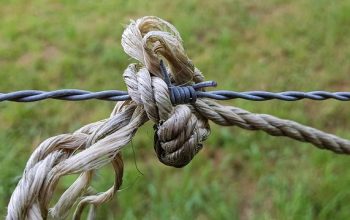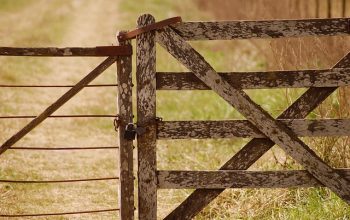When planning fencing for a farm, consider both functional and aesthetic needs. Choose between traditional materials like wood and metal or modern alternatives such as HDPE and vinyl based on durability, maintenance, and cost. Follow best practices in ground preparation, post spacing, stability measures, regular inspections, and maintenance to ensure the longevity of your farm fence, safeguarding your land and livestock.
Building a robust farm fence is essential for any agricultural operation, providing both functionality and security. This comprehensive guide delves into the key aspects of constructing a strong fencing farm. From initial planning and design considerations to material selection and installation techniques, we offer valuable insights. Learn best practices for maintenance to ensure longevity. Discover how to choose the right fence materials for durability and adapt these strategies to create a secure, efficient farming environment using effective fencing solutions tailored to your needs.
- Planning and Design Considerations for Farm Fencing
- Choosing the Right Fence Material for Durability and Functionality
- Installation Techniques and Best Practices for Longevity
- Maintenance Strategies to Keep Your Farm Fence Strong and Secure
Planning and Design Considerations for Farm Fencing
When planning fencing for a farm, it’s crucial to consider both functional and aesthetic aspects. Start by assessing your property’s unique needs—whether it’s keeping livestock in, defining property lines, or enhancing privacy. A well-designed fence should integrate seamlessly with the landscape while providing durable protection.
Think about the types of fences that align best with your farm’s layout and purpose. Electric fencing is a popular choice for grazing areas, offering flexibility and safety for animals. Post-and-rail fences are ideal for defining property boundaries or creating visual appeal in pasturelands. Consider the materials too—wood, vinyl, or steel each bring distinct benefits and styles to enhance the overall look of your farm.
Choosing the Right Fence Material for Durability and Functionality
When building a fencing farm, selecting the appropriate material is paramount for both durability and functionality. Traditional choices include wood and metal, each offering unique advantages. Wooden fences exude rustic charm and are relatively affordable, but they require regular maintenance due to their susceptibility to rot, pests, and weather damage. On the other hand, metal fences boast longevity and resistance to elements, making them ideal for harsh climates. They also offer better security and privacy compared to wood.
For a farm fencing solution that combines strength, durability, and low-maintenance benefits, consider high-density polyethylene (HDPE) or vinyl. These synthetic materials mimic the appearance of traditional fences but never rot, corrode, or warp. They’re highly resistant to UV rays, extreme temperatures, and chewing animals, ensuring your farm remains secure and well-protected for years to come. Moreover, HDPE and vinyl are easy to install, maintain, and clean, making them practical choices for busy farmers looking for a low-fuss fencing option.
Installation Techniques and Best Practices for Longevity
When installing fencing for farms, it’s crucial to employ techniques and best practices that ensure longevity. Start by preparing the ground properly; clear any debris, level the surface, and compact the soil to provide a solid foundation. Post-installation, regularly inspect your farm fence for signs of wear and tear, such as loose posts or damaged rails. Repairs should be addressed promptly to prevent further deterioration.
Use high-quality materials suited for agricultural use, like durable vinyl or treated wood. Ensure proper spacing between posts to allow for expansion and contraction without straining the fence. Consider adding tensioners and brackets for added stability, especially in areas prone to strong winds or livestock pressure. Regular maintenance, including painting or sealing wooden components, will extend the life of your farm fencing, ensuring it continues to protect your land and animals effectively.
Maintenance Strategies to Keep Your Farm Fence Strong and Secure
Regular maintenance is key to keeping your farm’s fencing strong and secure, ensuring it withstands the test of time and various environmental factors. Start by inspecting fences at least twice a year for any signs of damage, rot, or weakness. Promptly repair or replace damaged sections using high-quality materials suitable for outdoor use. A well-maintained fence requires minimal replacement, saving you costs and effort in the long run.
Consider implementing a preventive care routine, such as treating wooden posts with water-repellent preservatives every few years to protect against moisture absorption and rot. Keep an eye on surrounding vegetation; overgrowth can strain fences, so trim back trees, shrubs, or other plants that might encroach on your fence lines. Regular cleaning of debris and accumulations prevents weight from settling on the fence structure, reducing the risk of damage or instability.
Building a strong fencing farm involves thoughtful planning, selecting durable materials, mastering installation techniques, and implementing regular maintenance. By carefully considering these aspects, you can create a robust barrier that protects your farm while enhancing its overall aesthetic appeal. Remember, investing time and effort into your fencing system will ensure the long-term security and value of your agricultural property, making it a wise decision for any farmer looking to safeguard their land.




